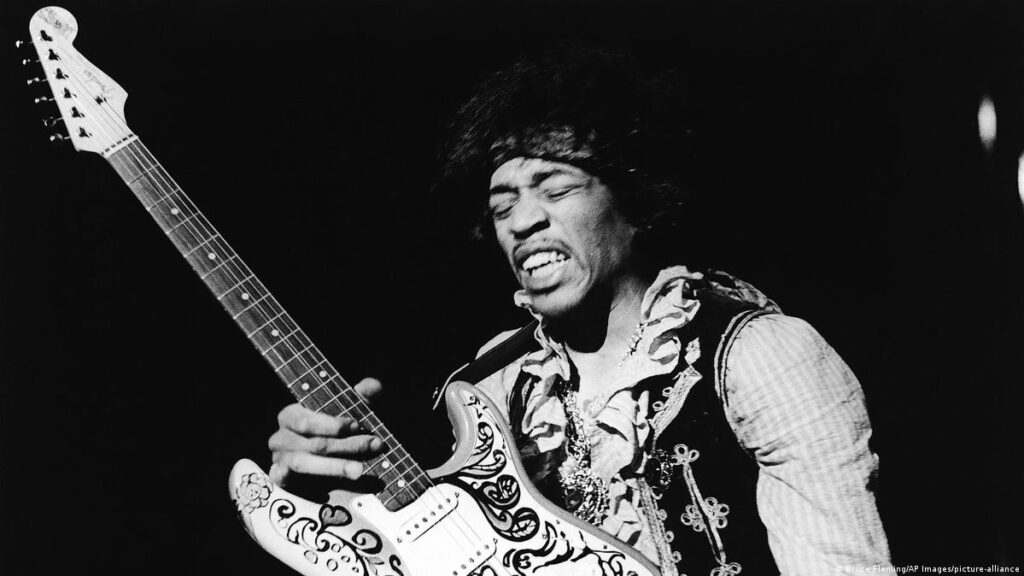· Alex Harris · Trending
The Mystery and Myth of the 27 Club

Have you heard of the 27 Club? If not, you’re about to enter a fascinating mix of myth, tragedy, and the rawest kind of rock ‘n’ roll history.
It’s not just a list of young musicians who died at the age of 27—it’s a strange phenomenon that’s become a deep cultural fixation.
From blues legend Robert Johnson to Amy Winehouse, the 27 Club is often treated like some eerie gateway that musical icons, tragically, keep stepping through.
What is the 27 Club, Anyway?
The 27 Club is an informal label for an unsettling phenomenon: a list of musicians, actors, and artists who all died at the age of 27.
It gained notoriety after the deaths of Jimi Hendrix, Janis Joplin, Jim Morrison, and Brian Jones between 1969 and 1971.
This wasn’t just a coincidence; fans and journalists couldn’t help but notice, and soon enough, the term “27 Club” was born.
Some claim it’s a curse. Others chalk it up to the high-risk lifestyles many artists lead—the drugs, the partying, the pressures of fame.
But why 27? Why not 28 or 25? There’s something about the number that has managed to captivate our imaginations.
The Notable Names: Members of the 27 Club
Let’s talk about the famous members of this club. Here’s where you’ll recognise some names:
- Robert Johnson: The blues pioneer whose mysterious death in 1938 is often linked to legends of a deal with the devil.
- Brian Jones: The Rolling Stones founder who drowned in his swimming pool in 1969. Was it misadventure, or something more sinister?
- Jimi Hendrix: The guitar legend who died in 1970, choking on his own vomit after a night of heavy barbiturate use.
- Janis Joplin: The powerhouse singer known for her raw voice and electric stage presence. Janis overdosed on heroin in 1970.
- Jim Morrison: The Doors frontman, who passed away in his Paris apartment bathtub in 1971. Heart failure? Drugs? The cause remains vague.
- Kurt Cobain: The reluctant voice of a generation, who died from a self-inflicted gunshot wound in 1994. His mother’s quote, “He’s gone and joined that stupid club,” only added fuel to the myth.
- Amy Winehouse: The soulful singer whose struggles with addiction were public and painful. In 2011, she joined the club, succumbing to alcohol poisoning.
While this list includes some of the biggest names in music, it’s by no means complete.
The 27 Club also includes other artists, actors, and even athletes whose lives ended at this perplexing age.
The Personal Struggles Behind the Myth
The 27 Club isn’t just about the age; it’s also about the very human struggles each of these artists faced.
The personal battles they fought make their stories even more heartbreaking.

Amy Winehouse: Amy was an old-school star, authentic and charismatic, but her struggles were painfully public.
She lived her lyrics, like “they tried to make me go to rehab, but I said no, no, no,” and ultimately paid the price.
Her death by alcohol poisoning was a tragic end to a life filled with both talent and turmoil.
Jim Morrison: Known as the shamanic frontman of The Doors, Jim Morrison’s journey was marked by a fascination with pushing boundaries.
He moved to Paris in an attempt to escape his destructive habits, but a fateful encounter with heroin—a drug he rarely used—proved too much.
His sudden burial and mysterious circumstances surrounding his death have only added to his mystique.
Janis Joplin: Janis, with her iconic voice, was a star of the Woodstock generation.
She was larger than life on stage, but behind the scenes, she struggled with heroin and alcohol.
Her death came after she took an unusually potent batch of heroin, and other users from the same dealer also overdosed that weekend.
It paints a picture of a woman caught in the wrong place at the wrong time, her brilliance overshadowed by addiction.

Kurt Cobain: Fame was something Kurt Cobain sought, but it also became his greatest burden.
He battled chronic stomach pain that drove him to heroin use, which he once said was “the only thing that’s saving me from shooting myself right now.”
His depression and the pressures of stardom ultimately led to his tragic suicide.
Kurt’s story is one of deep pain masked behind his role as the voice of a generation.
Brian Jones: The death of Brian Jones remains one of rock’s enduring mysteries.
He had been fired from The Rolling Stones for his erratic behavior and drug use, and was found dead in his swimming pool just weeks later.
There were rumours of foul play, and even today, questions linger about whether it was a simple accident or something more sinister.

Jimi Hendrix: He died after choking on his own vomit while sleeping.
He had taken nine sleeping pills that were prescribed for his girlfriend.
Some people claim that he was murdered by his manager or by the CIA.
Theories, Myths, and Urban Legends
The 27 Club isn’t just a tragic coincidence—it’s also a breeding ground for myths and conspiracy theories.
Some fans believe there’s a curse, something that comes for artists just as they’re reaching a particular peak.
- The Saturn Return Theory: In astrology, the planet Saturn returns to the same position it was in when a person was born, roughly every 27-29 years. This period is believed to bring intense challenges, and for those who struggle with fame and addiction, it can be overwhelming.
- The White Lighter Myth: According to some, many members of the 27 Club were found with white lighters, which supposedly bring bad luck. However, this is easily debunked, as white disposable lighters weren’t even available until the early 1970s.
- Deals with the Devil: Robert Johnson’s legend is steeped in this myth. The story goes that he sold his soul at a crossroads in exchange for musical talent, only to pay the ultimate price at age 27. This idea of a Faustian bargain has echoed through rock history ever since.
- The Fame and Pressure Hypothesis: One theory—perhaps less mystical but more grounded—is that these artists simply couldn’t cope with the pressures that come with sudden fame. Addiction, mental health issues, and the constant scrutiny of the public eye create a dangerous mix.
Is There Really a Spike in Deaths at 27?
Statistical studies have debunked the idea that musicians are more likely to die at 27 than at other ages.
A study published in the British Medical Journal found no significant spike at 27, concluding that the “27 Club” is more a cultural concept than a statistical reality.
In fact, some research suggests musicians are more likely to die at age 56 than at 27.
Fame may indeed increase mortality risk, but not specifically at 27.
Cultural Impact and Legacy
Books and Documentaries About the 27 Club
For those wanting a deeper dive into the 27 Club, several books and documentaries offer detailed insights into the lives of these artists, their struggles, and the myths surrounding them.
There are also numerous books that explore the 27 Club, shedding light on the cultural and personal factors that led to these tragedies.
These resources add rich layers to our understanding of the pressures that come with fame, and why this phenomenon continues to captivate us.
Despite the scientific debunking, the idea of the 27 Club remains deeply ingrained in popular culture.
- Music Inspired by the 27 Club: Bands like Fall Out Boy and artists like Juice WRLD have referenced the 27 Club in their music. Juice WRLD’s lyric, “What’s the 27 Club? We ain’t making it past 21,” alludes to the growing anxiety among young artists about living up to such infamous expectations.
- Documentaries and Tributes: Documentaries like Amy and Kurt Cobain: Montage of Heck provide intimate looks at the lives of those lost, attempting to understand the pressures they faced and the legacies they left behind.
These artists weren’t just musicians; they were voices of their generations, each with a raw honesty that resonated—perhaps too deeply—with their audiences.
The allure of the 27 Club is, in part, about this rawness. It’s about the sheer intensity of living so brightly that you inevitably burn out.
The Reality Behind the Myth
Is the 27 Club a curse, or is it merely the outcome of a lifestyle filled with risks and unchecked pressures?
It’s tempting to believe in the mythology, the idea that some otherworldly force draws these stars away at 27.
But the truth is more human and more heartbreaking: addiction, mental health struggles, and the isolation that can come with fame are very real.
The legacy of the 27 Club is both a tribute and a cautionary tale. It serves as a reminder of the fragility of life, even for those who seem larger-than-life.
It’s a reflection of the pressures of fame, and how, sometimes, the brightest stars burn out the fastest.
How to Break the Cycle
If anything, the 27 Club teaches us the importance of support—for artists, for anyone struggling with addiction or mental health issues.
Seeking help, leaning on loved ones, and finding purpose beyond the spotlight are all crucial ways to avoid the pitfalls that have ensnared so many.
The 27 Club is a sobering concept, but it doesn’t have to be anyone’s destiny. Fame doesn’t need to be synonymous with tragedy.
Why the Fascination?
The fascination with the 27 Club might also be a reflection of our own fears and curiosities about mortality and greatness.
What is it about these artists that makes us remember them so vividly?
Maybe it’s because they remind us that even legends are human.
They struggled, they made mistakes, and despite their brilliance, they were vulnerable.
So, here’s to hoping future artists make it to 28—and far beyond.
If you are interested in learning more about the 27 Club phenomenon and its members, you can check out some of the books and documentaries mentioned above.
You can also listen to their music and art, which are their best and most lasting gifts to the world.








